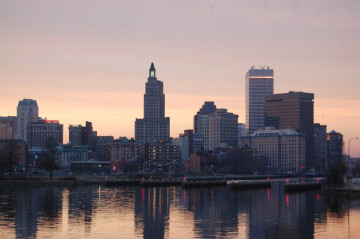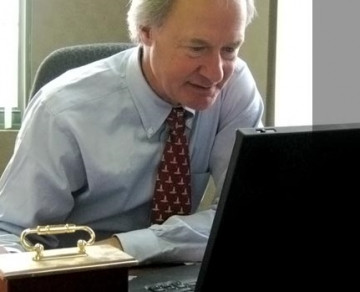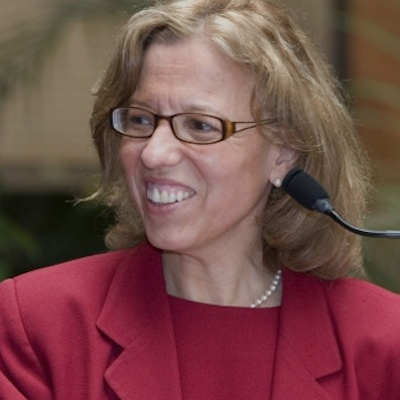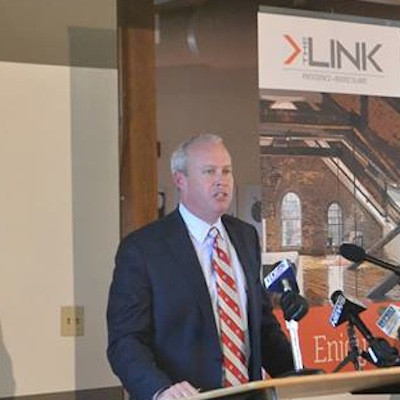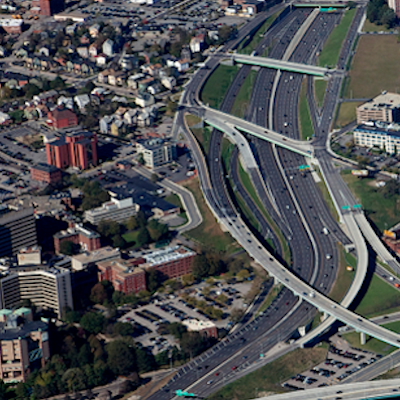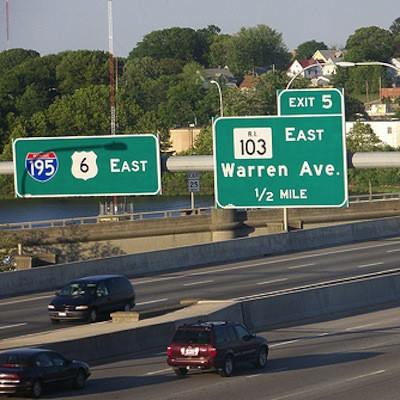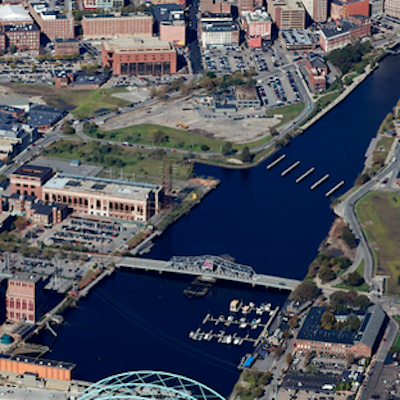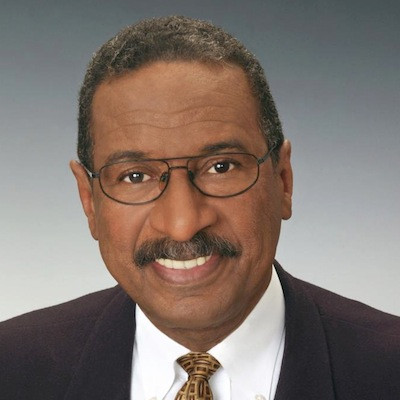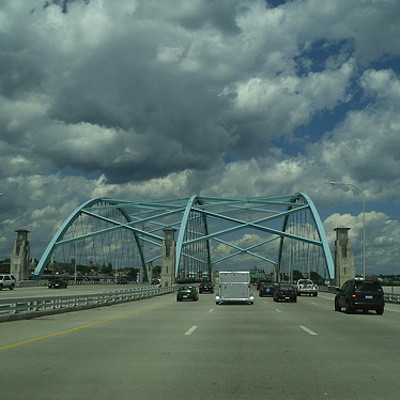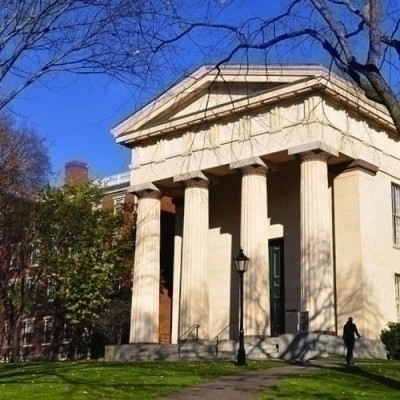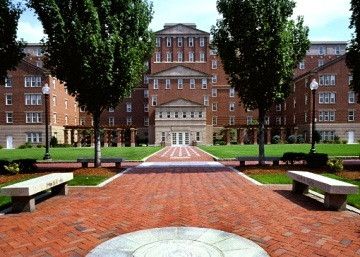Is Rhode Island Squandering Its Opportunity to Redevelop I-195?
Thursday, January 16, 2014
Almost three years after a new state agency was formed to spearhead its redevelopment, the land opened up by the relocation of Interstate 195 in downtown Providence remains vacant, crisscrossed by a maze of orange plastic fencing and traffic cones.
The Interstate 195 Redevelopment Commission has yet to review any formal development proposals. Nor has it issued any formal requests for such proposals—a critical step forward that officials say will happen next month, though no definite date has been set. (See below slides for profiles of key officials involved in the project.)
The commission was established in October 2011, but did not acquire ownership of the former I-195 land until April 2013, which it bought from another state agency, the Department of Transportation. It hired its executive director the following month.
GET THE LATEST BREAKING NEWS HERE -- SIGN UP FOR GOLOCAL FREE DAILY EBLASTCritics warn delays could cost commission
“They are taking forever, aren’t they?” said Joe Paolino, a former Providence Mayor and a local real estate developer. “My frustration with it is they already have so many good developers that want to develop there. Why do they have to waste time?”
The public may not have seen much activity above ground, but commission officials said in a series of interviews that the commission has been hard at work over the past two and a half years: going through the lengthy federal approval process for the sale of the land, engineering the storm water system for the land, obtaining environmental permits, and working with the city on zoning requirements—all work that officials say will save time down the road once developers become involved.
Still, critics question whether the commission has spent too much time planning.
“I believe in the planned development of ‘strategic’ land but not planning forever. Many of us still do not understand the relationship of the commission’s work to other city and statewide economic development activities. After three years, there is little to show for their efforts. While they deliberate, and provide consulting agreements to non-Rhode Island firms, potential Rhode Island economic development opportunities have gone to other states,” said Ed Mazze, an economist and business professor at the University of Rhode Island.
Mazze said the commission—whose members were nominated by Governor Lincoln Chafee and confirmed by the state Senate—was “an excuse for government and legislative leaders to postpone tough decisions on what to do with the land.”
Rhode Islanders are certainly accustomed to how long major redevelopment can take, as they’ve seen the slow but steady transformation of the downtown in Providence over the course of several decades.
But some of the biggest developments in the state’s history have occurred relatively quickly. The plan for the new terminal at T.F. Green airport was launched by Governor Bruce Sundlun after he took office in January 1991. The terminal opened in September 1996. The financing agreement for the Providence Place Mall was finalized in 1996, construction began in 1997, and the mall opened to customers in 1999.
“The Commission is an example of the ‘theory of creeping meat-ballism’—bring together a group of individuals with little or no experience in economic development, give them a budget and some authority, let them meet for a few years and get little action other than what would have happened anyway without them,” Mazze said.
To date, the commission has spent approximately $866,000, not counting the current fiscal year. With a volunteer board and just two staff members, the bulk of that funding has largely gone to attorneys, engineers, and consultants. (As a comparison, the Providence Department of Planning and Urban Development had a budget of $5.3 million in 2012 for a staff of approximately 40.)
I-195 chairman: ‘We have gone at light speed’
Last September, soon after GoLocalProv starting making inquiries about the work of the commission, a spokeswoman forwarded a one-page document identifying what the commission had achieved and what it was in the process of doing. Notably, there was no mention of any meetings with developers in either section. Instead, under a section labeled “longer-term” the document pegged January 2014 as the target date for when proposals were to be solicited from developers—though that has now been moved to next month, officials said this week.
In an interview, commission chairman Colin Kane said the group has been hard at work and has accomplished much—even though it may not seem so to the public. “I would suggest that we have made extraordinary progress in terms of advancing the preparation of this property for vertical construction,” Kane said.
He pointed to the transfer of land ownership from the state DOT to the commission. The process, he said, is a lengthy one that requires the approval of the Federal Highway Administration. “This is a complicated, complicated transaction,” he said. Kane suggested that two years was a shorter-than-usual turnaround that was made possible because of the initiative of state and federal officials.
The same goes for the environmental permitting for land that Kane described as “Brownfield central.” He said the commission had expedited the permitting process by obtaining the first-ever joint permit from the state Department of Environmental Resources and the Coastal Resources Management Council, another state regulatory agency. As a result, Kane said the process took 20 months, rather than the 36 months it might have taken a private developer.
“I have been doing this for a very long time. We have gone at light speed in this business,” Kane said.
He also said the genesis of the mall project took longer than the three years between the completion of its financing agreement and its opening. Kane said that three years of pre-development efforts, including design and engineering had gone into the project. Overall, he said it had been a 10 to 15-year project.
Chafee, Ruggerio defend commission
State officials this week told GoLocalProv they had confidence the commission was moving forward.
“The development of the 195 land in the heart of Providence has made tremendous progress specifically the work to prepare the land for development. All of the proper infrastructure is being put in place and has been aggressively pursued through state, city, federal and private partnerships,” Chafee said in a statement to GoLocalProv.
Chafee credited a team of state agencies with “quick work” on the permits, including DEM, the DOT, the Narragansett Bay Commission, the Department of Administration, and Coastal Resources.
“The site is very busy with activity as we ensure the construction of good solid infrastructure—roads, utilities, sewers, drainage among other groundwork. The 195 land has been branded, the LINK, and implementation of a marketing plan has started. This has been a thoughtful project and smart decisions have been made by members of the Commission,” Chafee said.
Senate Majority Leader Dominick Ruggerio—one of the chief champions of the legislation that created the I-195 commission—agreed. “Of course we would all like to see the cranes in place and workers on the job to build a new skyline right away, but this is not a realistic expectation. It was always expected to take some time to overcome logistical hurdles, such as putting gas and electric utility lines in place and building roads. The average citizen might not have noticed much of the work that has been done so far, but the work is moving forward,” he said.
One man who has been a pivotal figure in the redevelopment of downtown Providence—former Mayor Buddy Cianci—told GoLocalProv that there may be a perception the commission has been slow, but he said he understands why. “It’s taken a while, but I understand that,” Cianci said. He pointed to the Capital Center District, a major development project that took roughly 25 to 30 years to complete.
Cianci urges the commission to be proactive in deciding what kinds of developments it wants to see in the I-195 district. He said whatever ends up being built on the land should be “symbiotic” with the rest of the city. He said the commission has to find projects that fit into an area dense in hospitals and universities all the while also working with city and state officials to line up attractive tax incentives for future developers. “It’s like conducting the Boston Symphony,” Cianci said.
Infrastructure work to be done in 2015
Kane said the state is also saving developers money by investing $50 million into infrastructure work on the I-195 parcels—connecting streets and sewer pipes, installing a storm-water system, setting up utilities, and relocating the vault for the city’s primary electrical feed, among other work. “That’s not sexy. But that’s how we plow the field to take advantage of this once in a generation opportunity,” Kane said.
The infrastructure work on the west side of the former I-195 land will be done by the end of this year. The east side portion will be done by late summer 2015. The parks that ring the areas of future development will be open in 2015 and a pedestrian bridge tracing out the pathway of the former highway will be completed in 2016, according to Jan Brodie, the commission’s executive director.
That means that even if the commission had started vetting formal proposals for developers, construction on their projects still could not have started by this point, according to Kane. “No one can build right now. They have to be able to plug into a sewer and to electrical sockets. We are building those today with our partners at DOT,” Kane said.
Was the commission shortchanged?
One local real estate expert, speaking on the condition of anonymity, suggested that budget issues could have handicapped the commission from the get-go, slowing down its work. The commission was formed in October 2011, but it did not have money in its first year for an executive director. It did not even have a budget.
“Our theory was ... to learn to be lean early. We don’t need to build another state agency. We need to put ourselves out of business, quite frankly,” Kane said.
For its first year, the commission had to borrow money from the Economic Development Corporation to fund its operations. It also uses office from the agency (now re-named the Rhode Island Commerce Corporation).
Kane insisted that the budget was not a factor in the timeline. “It did not impede our progress,” he said.
The source also warned that financial and economic realities could put a damper on efforts to attract developers. Construction costs that are almost as high as those in Boston, with rents half as high, coupled with the highest commercial property taxes for comparably-sized cities, isn’t exactly a winning formula for the redevelopment effort, the source suggested.
Kane did not dispute that financial factors will be a challenge. “The property taxes are tough. It’s a real challenge,” he said. “That sort of disconnect between rents and costs …[is] quite real.” But, he added, those challenges are common to most cities in the country, with the exception of a handful (Boston being one of them).
On the upside, Kane emphasized the approximately $50 million investment the state has put into infrastructure work on the site. The pre-permitting that the commission has done, he added, removes much of the uncertainty and risk that would normally face developers.
So far, however, the commission has not hashed out any agreements that would give developers a break on property taxes. Kane said the group is “not there yet.”
Commission spokeswoman Dyana Koelsch suggested that it may seek out such agreements in the future. “The commission expects to work with developers to make their projects successful. That may in some cases include discussions with the state and the city about incentive programs that can advance desirable projects that have long-term economic value,” Koelsch said.
Clock ticking on development proposals
Although it has not heard any formal development proposals, Kane said about eight or nine potential developers and other groups have expressed an interest in the site. That includes Brown University—which opened up its new medical school nearby in 2011—and Johnson and Wales University, which has already purchased one of the former I-195 parcels that was carved out of the rest of the district.
Almost 19 acres are open for development. Kane said the existing infrastructure could support up to three million square feet of space—roughly double the size of the Providence Place Mall. (The mall sits on almost as much land, about 15.4 acres, according to city property records.)
Several private groups have also reportedly aired informal proposals for the land, including the Carpionato Group (based in Johnston), Churchill and Banks (Providence), and Hecht Development (Concord, Mass.).
If those developers are seriously interested, they will have to wait until the commission issues its formal request for proposals next month (technically the solicitation is a Request for Information, or RFI). When asked why the commission had not started the formal review process earlier, Koelsch said the “clear title, master environmental permitting, new utilities, zoning flexibility, and a transparent expedited path to development … are critical elements of the RFI.” (The last element was developed between September and December and finalized this month.)
The commission will review and make selections from responses 90 days after the RFI is issued. After that, generally there will be an 18-month process for developers to “finalize their design, get approval, and secure funding,” according to Koelsch.
In the meantime, the commission is resolved to make sure the former highway parcels don’t remain vacant for too much longer. The commission has also solicited proposals for interim uses for the land—presumably, large sculptures and other forms of interim art. The commission will soon be reviewing the proposals, which were due on Wednesday. The installations will start going up in May and could be in place up to a year, according to Koelsch.
That process, Kane said, will not interfere with the commission’s review of formal development proposals. “We are clever—we can do more than one thing at once,” Kane said.
Stephen Beale can be reached at [email protected]. Follow him on Twitter @bealenews
Related Slideshow: I-195 Redevelopment: Key Players
Below are the key players in the redevelopment of the former Interstate 195 land. Listed are the seven members of the special state-appointed commission overseeing the redevelopment, as well as the state and local officials who have backed the effort. In addition to top city and state leaders, nonprofits like Brown University and Johnson and Wales are also expected to have a hand in the redevelopment. (Note: bios of commission members are from the Governor’s office.)
Related Articles
- Civic Groups to Host Forum on I-195 Plan
- PPS Fall Symposium: 195 + Downtown
- Costantino Releases Plan for I-195 Corridor
- Land Battle: What Next For 195 Development
- Residents Blast I-195 Commission
- NEW: Chafee Nominates 1-195 Commission Members
- NEW: Senate Confirms 195 Commission
- Taveras Unveils I-195 Plan
- NEW: Senate Postpones Session Confirming I-195 Panel
- Taveras Appoints Adviser for I-195 Redevelopment
- NEW: Taveras, Fox Submit Names for I-195 Commission
- What Should Be Done with Old I-195 Land?
- Campaign Donors Fill 195 Commission
- NEW: Work Starts on Former 195 Land



